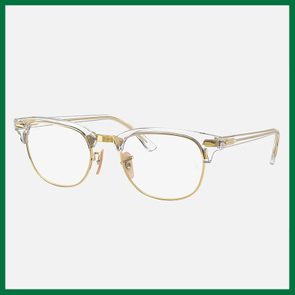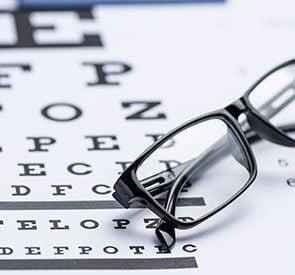How to Read Glasses Prescriptions
Updated: Oct. 25, 2021
Whether you're handing the prescription to the eyeglasses associate or buying glasses online, here's what all those numbers and abbreviations mean in your prescription for eyeglasses or contact lenses.
Breaking the code
Remember when your doctor used to write longhand prescriptions for medications? You couldn’t decipher the scribbled handwriting without a secret code, it seemed.
Though computers now generate prescriptions for eyeglasses and contacts in neat and tidy columns, you still need a decoder to make sense of them. There are abbreviations but no explanations, and numbers assigned to some columns but not others. And it’s unclear which group of abbreviations and numbers are for the right eye or left, which is important if you’re buying eyeglasses online (or contacts).
Here’s how to read your glasses prescription. By the way, O.D. (oculus dexter) means the right eye, and O.S. (oculus sinister) means the left eye.
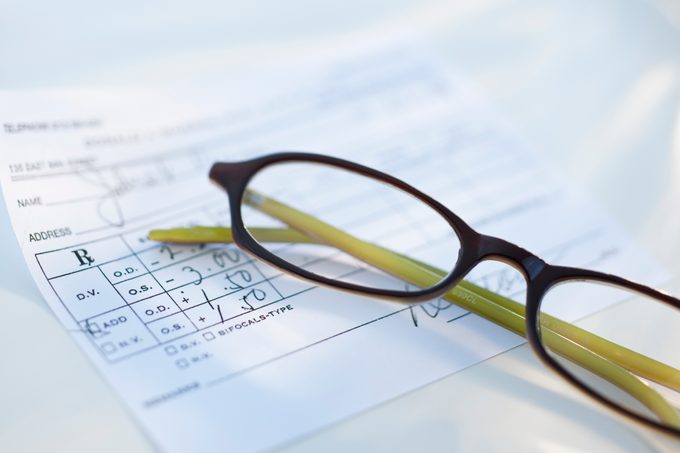
Power Sphere (SPH or PWR)
“The SPH means ‘sphere,’ which is the gross correction (myopic or hyperopic) needed by the patient,” says Richard Davidson, MD, an ophthalmologist at the UCHealth Sue Anschutz-Rodgers Eye Center, Anschutz Medical Campus, in Aurora, Colorado.
This is the first number in the prescription and refers to the prescription power/strength needed for the lenses to correct your vision. There will either be a plus (+) or minus (-) next to the number.
A minus signifies correction for nearsightedness (myopia), and the plus stands for farsightedness (hyperopia).
“Myopia is corrected with a minus (diverging) lens, and hyperopia is corrected by a plus (converging) lens,” Dr. Davidson says.
A diverging lens is concave in shape, and it bends incoming light rays outward, so the eye’s lens focuses the light closer to the retina instead of bending incoming rays too much. A converging lens curves outward and bends light from distant objects inward toward a single point, called the focal point.
Cylinder (CYL)
This category may be blank. A number only appears in this category if you have astigmatism, a common condition where the cornea is irregularly shaped, causing blurry or distorted vision.
(A normal eye is like a basketball, smooth with an equal curve in all directions. With an astigmatism, the eye shape is like a football.) If your cornea isn’t smooth or evenly curved, light rays aren’t refracted properly.
Axis
Next up is the axis, which describes the degree and direction of your astigmatism. However, if you do not have astigmatism and do not have a cylinder power on your prescription slip, you will not have an axis number. The axis is measured in degrees from 1 to 180, and it’s perfectly normal to have a different number for each eye, Dr. Davidson says.
Prism
If there is a number in this category, it denotes the amount of prismatic power in diopters to compensate for diplopia (double vision). Eyeglasses with prism bend the light before it travels through your eye, rerouting the light to the correct place on the retina in each eye.
The brain then receives the message to fuse the two images together to produce one clear picture. The base is the thickest edge of the prism. Depending on your double vision, the prism is vertical, horizontal, or diagonal, in one or both lenses of your eyeglasses.
Next to the prism number are abbreviations for the direction of the prism. “BO” refers to the outer edge. “BI” means the inner edge. “BU” denotes the top, and “BD” refers to the bottom edge.
ADD
Over several years, the shape of the crystalline lens of the eye changes, affecting our ability to focus on things close up—like our phone, a book, or a menu.
Sometimes you have to hold the item at arm’s length or squint to focus, but it is still difficult to zoom in and read letters or easily recognize a family member in a picture.
This condition is called presbyopia and happens to just about everybody over the age of 40. There is a plus sign for bifocals or progressive eyeglasses with the number indicating the power to correct your immediate near vision if your prescription is primarily for distance.
Should you order glasses online?
When you have a prescription from your doctor, you can either order your eyeglasses from them or online.
Ordering online is simple, and you can scroll through glasses that best suit your face shape at your leisure, but it isn’t easy to know if the frame construction is of high quality. Plus, you don’t get the opportunity for a custom fitting by an optician.
“In the event that something is wrong with the glasses or the prescription, it is a lot easier to troubleshoot if the glasses were made by the people trying to troubleshoot them,” says Nathan Hamburger, MD, an ophthalmologist in Steamboat Springs, Colorado, and at the UCHealth Yampa Valley Medical Center.
How to read contact lenses prescription
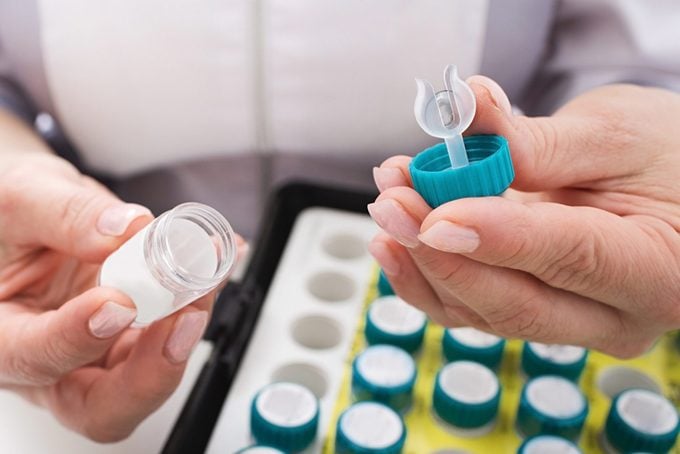
Whether you opt to wear only contact lenses to correct your vision or alternate between eyeglasses and contacts, you’ll need a different exam and fitting, as contact lenses require a separate prescription.
Contacts sit on the surface of your eye, where they float on a film of tears in front of the cornea, whereas eyeglasses sit a few millimeters in front of the eyes. Therefore, the power and size of your contact lenses will be different from your eyeglasses prescription.
And the shape of glasses corrects astigmatism, whereas contact lenses fit astigmatism.
Power Sphere (SPH or PWR)
As with glasses, this number is the prescription power/strength for the contact lenses to correct your vision. There will either be a plus (+) or minus (-) next to the number. A minus signifies correction for nearsightedness (myopia), and the plus stands for farsightedness (hyperopia).
Base curve (BC) and Diameter (DIA)
A comfortable fit is everything when it comes to wearing contact lenses. If the fit is wrong, you’ll feel it immediately and want to pop them out right away.
Plus, if they don’t fit properly, they could shift, causing blurry vision. The base curve of a lens indicates the curvature on the inside of a lens, so it should be as close to the curve of your eye as possible.
“The shape of the cornea determines what base curve is necessary for a contact lens,” Dr. Davidson says. Diameter is the width of the lens from end to end, and determines where the contact lens edges will rest on the eye.
If the measurement is off, you may get dry eyes or abrasions. Most brands of contact lenses come in one standard size between 13.5 and 15 millimeters wide.
(If you have dry eyes, these are the best contacts, according to doctors.)
Cylinder (CYL)
This category is for people with astigmatism, a condition in which part of the eye needs more correction than the rest of the eye.
The cylinder is different from your power measurement and features a minus (-) sign. If you do not have astigmatism, you won’t see a number here.
Axis
The axis stands for the angle at which your astigmatism exists in your cornea.
“If you picture the cornea like a circular clock, there are 360 degrees to that clock. So, the axis can be anywhere between 0 and 180 degrees,” Dr. Davidson says. “Therefore, it is very common for each eye to have a different axis. Depending on how the prescription is written, it is either the steep or flat part of your cornea.” But if you don’t have a number in the cylinder field, you won’t have a number in the axis field, either.
Add power (ADD)
A plus sign with the number adds a degree of magnification to certain portions of bifocal and multifocal contact lenses.
These types of contact lenses have two or more prescriptive powers to correct near, intermediate and far vision. They’re ideal for people with presbyopia who don’t want to wear bifocals or progressive lens eyeglasses.
However, contact lens wearers have the option to use a distance lens in both eyes and keep a pair of reading glasses handy for close-up work, like reading their phone or food labels at the grocery store.
Should you order contacts online?
If it’s your first time ordering contact lenses, or your eye doctor recommends a new type of contact lens, a contact lens fitting is essential for optimal fit, comfort, and vision correction. Your eye doctor orders a trial pair of contacts that you wear for a few days.
If all goes well, then a final prescription is written. The fitting is essential because one brand of contacts might fit better and feel more comfortable than another, which is not only painful but could affect your vision.
“Even lenses with similar base curves and diameters may fit differently, and sometimes this is due to slightly different lens thicknesses or materials,” Dr. Davidson says.
Once you discover the brand that works for you, you can order contact lenses from your doctor or online. Just don’t make these contact lens mistakes that could ruin your eyes.
Do you need readers?
Remember that presbyopia we mentioned earlier? It happens to everyone at some point, even if you’ve never worn glasses or contact lenses to correct your vision. When you discover the texts or the directions on the macaroni-and-cheese box are out of focus, it’s probably a sign you need readers.
You can head to the drugstore to pick up a pair of readers, but if you haven’t been to the eye doctor in a while, you should also consider making an appointment with an optometrist or ophthalmologist to rule out vision problems or even other health problems an eye doctor might discover you didn’t know you had.
How to pick out readers at the store
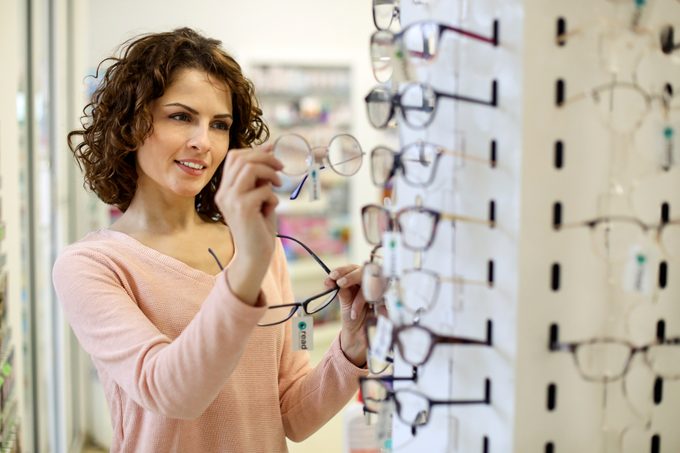
The strength of reading glasses is measured in diopters. Typically, readers are available from +1 to +4 diopter, in increments of +.25. The higher the diopter, the more magnification.
Experiment with different strengths by reading the eye chart accompanying the display or grabbing a bottle of vitamins to read the label. Keep in mind a higher diopter will have less depth of focus—the range of distance at which you can see something clearly.
“Patients should find a strength of readers that is high enough to provide enough magnification for what they are trying to read, but remember that as the strength goes up, they will have less range of focus,” Dr. Hamburger says. As the years go by, the strength of diopter will increase, too. Vision or eye problems at any age are a clear sign you need to see an eye doctor.
If you do see an eye doctor regularly, your doctor can tell you what diopter to get so you can save some time at the drug store. However, you may need two different readers, depending on your lifestyle.
“People who spend a lot of time on the computer will often have a separate pair of readers with less strength than those they use for reading books and labels. Having less strength will allow them to work on the computer at a more comfortable working distance for the eyes,” Dr. Hamburger says.

